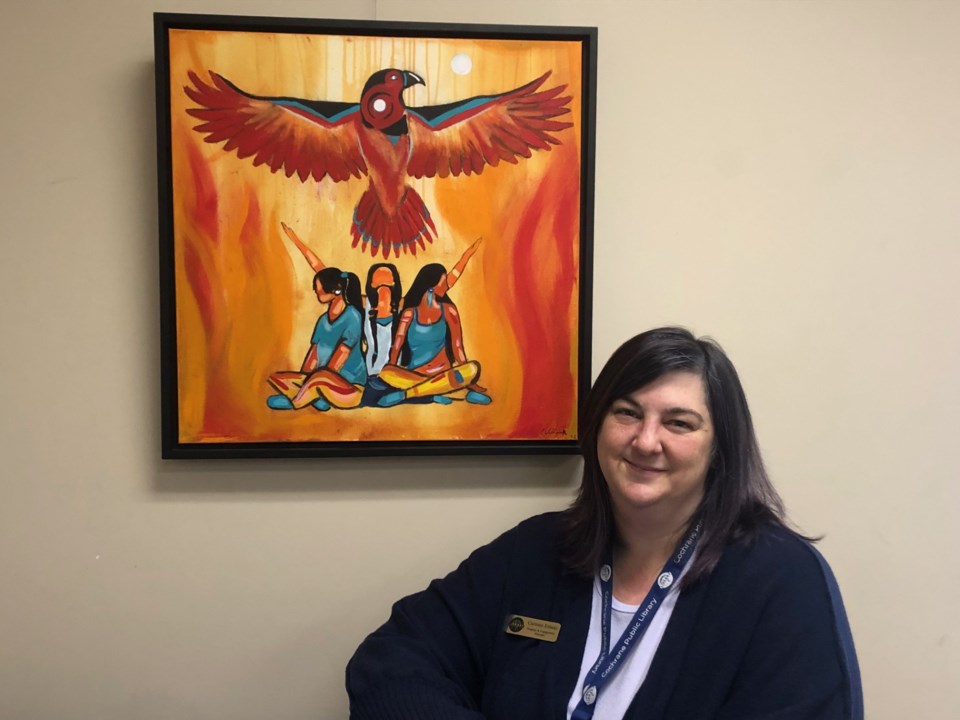The Cochrane Public Library is branching out into art and culture by expanding the traditional activities of a library to include those of an art gallery.
The artworks in the inaugural exhibition, called Storytelling, all have a story behind them.
“What’s unique about this exhibition is it’s very 3D – there’s fibre, and beading, many different art forms. And they’re all meant to tell a story,” said the library’s Program and Engagement Manager Carmen Erison.
She said this exhibition marks the launch of an ongoing art gallery space at the library, which will allow Cochranites the opportunity to view original artworks without having to travel to Calgary or elsewhere.
This gallery/exhibition was curated by Christina Wallwork and Jamie-Lee Cormier, Art Gallery of Grande Prairie, for TREX Northwest, and will be on display at the library until Feb. 26.
Erison said the funding for the upgrades to the library to accommodate the art gallery came from a grant from the BREC (Bow Rivers Edge Campground) grant committee.
Indigenous storytelling uses oral tradition, dance, music, and art to express history.
These stories have been passed down through the generations not only as an oral history, but to share where to find certain places to harvest and hunt, along with vital information for survival. Stories often go hand in hand with survival including sharing knowledge on which waterways to take, or which plants to grow and eat. Stories were told for everybody (young and old) and were a mixture of supernatural and everyday life.
Storytelling could vary between households. They were told around the fire at night or the kitchen table. Sitting together telling stories created lots of laughing and singing and shared what previous generations told.
The exhibition Storytelling shares the voices and traditions of four Indigenous artists, Haley Bassett, Adrienne Greyeyes, Laurie McCallum, and Christina Wallwork.
The artworks in this exhibition use traditional materials and mediums such as beading, finger weaving, sewing, painting, print making, moosehide, and plants harvested from the land. The relationships with the land, nature, plants, and animals influences their art.
Some of the artists use their art to form connections with their past that has been severed.
Some create to honour those whose lives were taken too soon. They use their art as a form of expression to reclaim their culture and share it so that the world knows the Indigenous people are still here.
Adrienne Greyeyes is a nehiyaw from the Bigstone Cree Nation in Northern Alberta. She pursued teachings of cultural arts since she was a teenager and spent many hours with her nohkomak, elders, and teachers learning and perfecting her skills.
In addition, Adrienne is a graduate of the Emily Carr University of Art and Design. The purpose of her work is to honour traditional practices by focusing on a minimalist design that serves to emphasize the natural beauty of the traditional materials.
The work involved in obtaining a moose hide and processing it takes considerable skill, time and knowledge and the finished hide is precious and beautiful on its own. There is much patience and skill required to complete a beaded project as well as honour in being able to carry on family designs.
Adrienne’s beadwork reflects the life-cycles of medicines and stories emphasizing the importance of relationship between land and identity.




